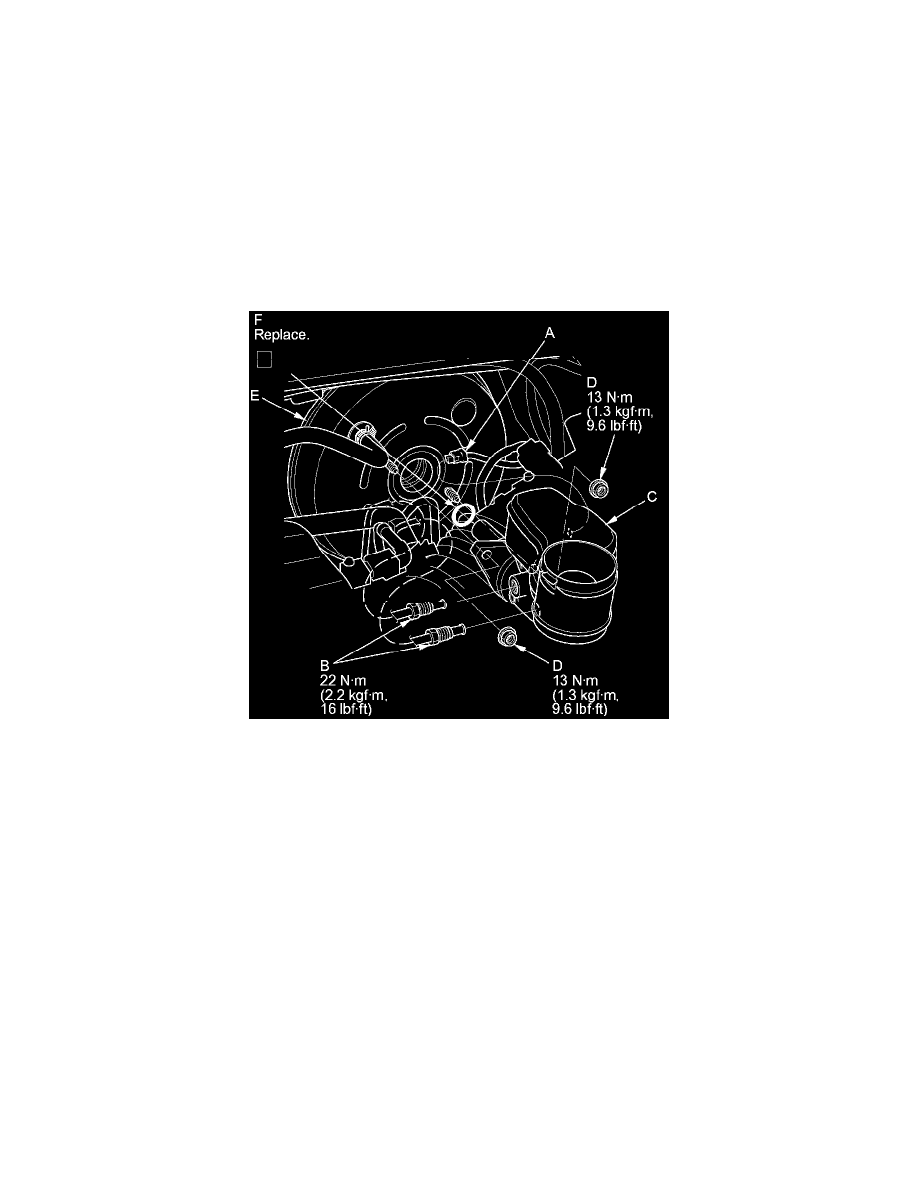ZDX V6-3.7L (2010)

Brake Master Cylinder: Service and Repair
Brake Master Cylinder Replacement
NOTICE
Do not spill brake fluid on the vehicle; it may damage the paint. If brake fluid gets on the paint, wash it off immediately with water.
NOTE:
-
Be careful not to damage or bend the brake lines during removal and installation.
-
After removal, plug the ends of the hoses and the joints to prevent spilling brake fluid.
1. Remove the reservoir cap and the brake fluid from the master cylinder reservoir with a syringe.
2. Disconnect the brake fluid level switch connector (A).
3. Disconnect the brake lines (B) from the master cylinder (C). To prevent spills, cover the hose joints with clean rags or shop towels.
4. Remove the master cylinder mounting nuts (D).
5. Remove the master cylinder from the brake booster (E). Be careful not to bend or damage the brake lines when removing the master cylinder.
6. Remove the O-ring (F) from the master cylinder.
NOTE: Replace the O-ring whenever the master cylinder is removed.
7. Install the master cylinder with a new O-ring in the reverse order of removal, and note these items:
-
Check the brake booster pushrod clearance See: Power Brake Assist/Vacuum Brake Booster/Adjustments.
-
Coat the new O-ring with silicone oil (Shin-EtsuKF 54).
-
Make sure not to get any silicone grease on the terminal part of the connectors and switches, especially if you have silicone grease on your
hands or gloves.
-
Check the brake pedal height and free play after installing the master cylinder, and adjust it if necessary See: Brake Pedal Assy/Adjustments.
8. Bleed the brake system See: Brake Bleeding/Service and Repair.
9. Spin the wheels to check for brake drag.
